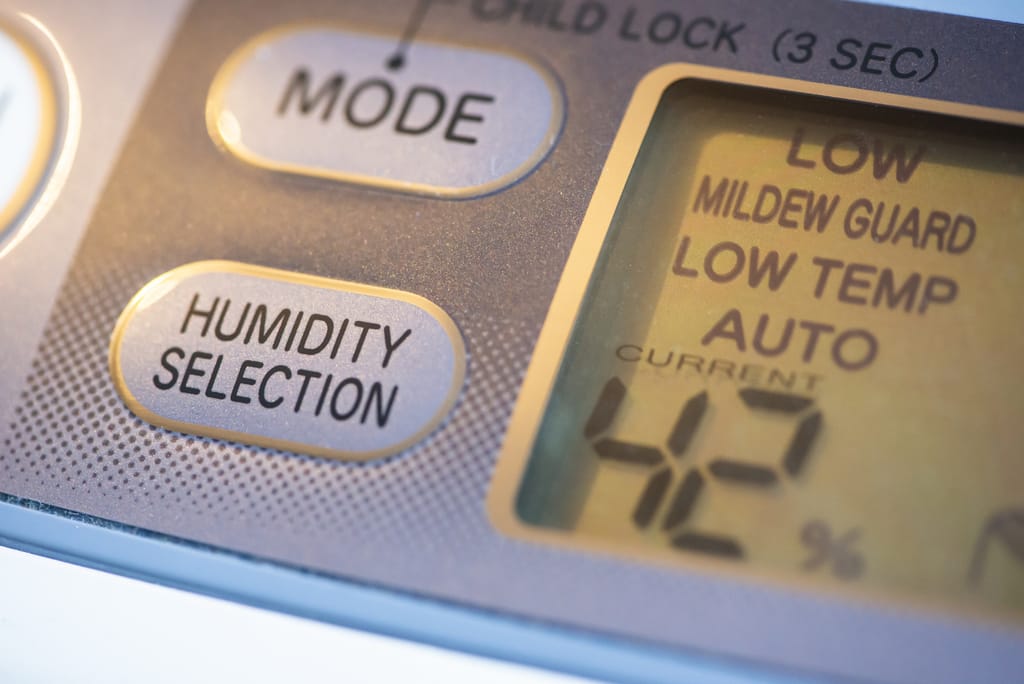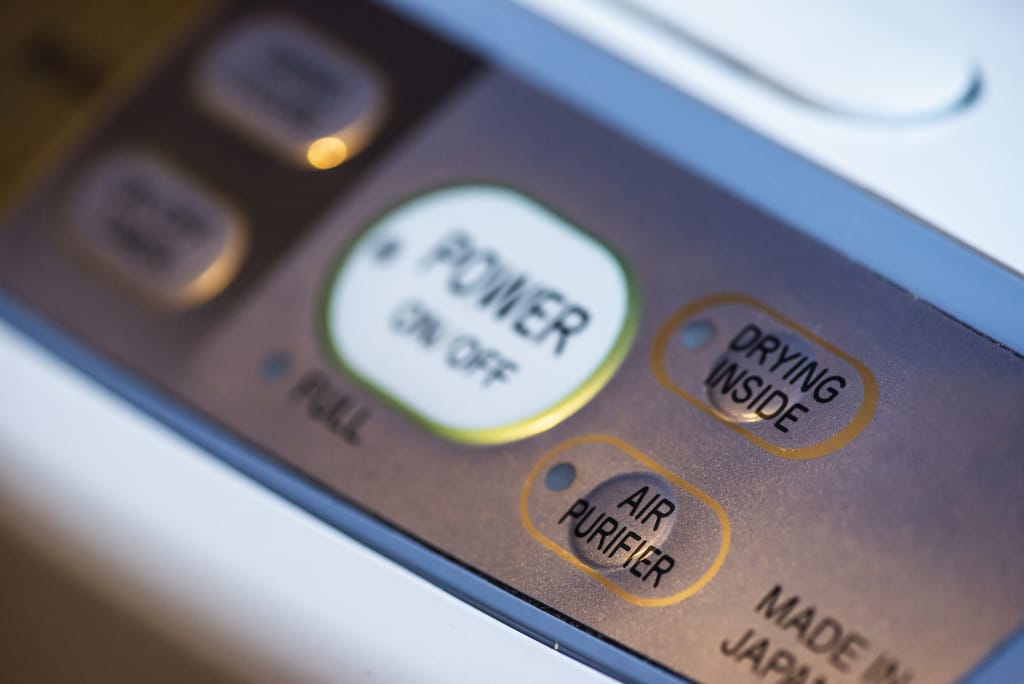How dehumidifiers work
A dehumidifier is a device designed to reduce the level of humidity in the air. It works by drawing in humid air and running it through a filter or cold coil. The device then releases the dry air back into the room. By doing so it helps to reduce moisture levels in the environment, which can help to prevent mold, mildew, and musty odors from forming. A dehumidifier can also help to reduce dust mites, which can be beneficial for people with allergies.
How it works
Dehumidifiers are an essential piece of equipment for keeping homes comfortable and healthy. The devices work by drawing in air from the surrounding environment, passing the air through a cooling coil, and then returning the air to the room at a lower humidity level. The cooling coil condenses moisture in the air, much like a cold beverage can on a hot summer day. As the air passes over the cooling coil, the moisture is condensed into water droplets and collected in a drain pan or bucket.
Users can adjust the amount of humidity that a dehumidifier removes based on their preference. This is important because too much humidity can lead to increased levels of mold and dust mites, which can cause allergies and other respiratory issues. A dehumidifier can also help to reduce the growth of mildew and other allergens.
Dehumidifiers can also help to lower energy costs. By reducing the amount of moisture in the air, a dehumidifier can help to keep a home cool and comfortable without having to use as much energy to power air conditioning or heating systems.

Benefits
Having a dehumidifier installed in your home can provide a range of benefits that improve the quality of life for those living in the home. Dehumidifiers work by extracting moisture from the air, which helps to reduce the levels of relative humidity in the home. This can be extremely beneficial for those with allergies and asthma, as it reduces the amount of dust and mold in the air.
Dehumidifiers can also help to reduce the risk of condensation and dampness in the home. As humidity levels rise, it can cause a buildup of moisture on walls, windows, and other surfaces. This can lead to the growth of mold and mildew, which can be difficult and expensive to remove. By using a dehumidifier, you can remove this moisture from the air, helping to prevent the growth of mold and mildew.
A dehumidifier can also help to reduce the amount of dust in the air. Moisture in the air can cause dust particles to become suspended and spread throughout the home. By reducing the humidity levels, the amount of dust in the air can be significantly reduced.
Having a dehumidifier installed in your home can help to improve the overall comfort of the home. High humidity levels can make it difficult to keep your home at a comfortable temperature, as the air is often too humid for air conditioning to be effective. By reducing the amount of humidity in the air, it is easier to keep the home at a comfortable temperature, making it more enjoyable to live in.
Maintenance
Proper maintenance of a dehumidifier is essential for ensuring its efficient and safe operation. To ensure long-term performance and reliability, perform regular inspections and maintenance under the manufacturer’s instructions.
The first step in dehumidifier maintenance is to visually inspect the unit for any signs of damage. Check for loose or missing parts, as well as any signs of corrosion or rust. If any of these issues are present, contact a qualified service technician for repair or replacement. It is important to clean and replace the air filter regularly. Depending on the model, this can range from every month to every three months. Refer to the manufacturer’s instructions for the recommended cleaning schedule.
Ensure that furniture or other objects do not block the air intake and exhaust vents. The condensate tank should also be emptied regularly. Depending on the amount of humidity in the air, this may need to be done daily. After emptying the tank, inspect the drain hose for any blockages or damage.
Finally, inspect the electrical connections and wiring of the dehumidifier to ensure they are in good condition and properly secured. If any wiring appears to be damaged, contact a qualified service technician for repair or replacement.

Types of dehumidifiers
Dehumidifiers are a key appliance in controlling the humidity in the air, which is important for indoor air quality and comfort. Different dehumidifiers are available, each offering unique features and benefits.
The most common type of dehumidifier is the compressor-based dehumidifier. These units draw in air and cool it with a refrigerant system, causing the water vapor to condense and drain away. Compressor-based dehumidifiers are most effective in larger spaces and are more energy-efficient than other types of dehumidifiers.
Desiccant dehumidifiers use a desiccant material, such as silica gel or calcium chloride, to absorb moisture from the air. We often use these in areas with high humidity, such as basements and crawlspaces, since they are not as affected by temperature as compressor-based units.
Thermal electric dehumidifiers are the most energy-efficient type, since they use a heated coil to transfer moisture from the air to a collecting tank. However, they are not as effective in larger spaces.
Heat pump dehumidifiers use a heat pump to draw in warm, moist air and cool it, causing moisture to condense and collect in a tank. These are the most energy-efficient of many dehumidifiers, but they are also the most expensive.
Finally, chemical absorbent dehumidifiers use chemical absorbent materials to remove moisture from the air. These are the most affordable type of dehumidifier, but they are not as effective as other types.
Maximum Results
To maximize the efficiency of your dehumidifier, there are several steps you can take.
- Make sure the dehumidifier is in the right place. It should be placed in an area where it can draw in the most humid air, such as a basement or closet. We should also place away it from direct sunlight and other sources of heat, as this can cause the dehumidifier to overheat.
- Change the filters regularly. The filters on a dehumidifier need to be changed at least once a month to keep them working efficiently. This will ensure that the dehumidifier can draw in the most humid air possible.
- Consider purchasing a larger dehumidifier. The size of the dehumidifier should match the size of the space it should dehumidify. A larger dehumidifier will be more efficient at removing moisture from the air.
- Adjust the humidity level on the dehumidifier. The ideal humidity for a home is between 30 and 50 percent. Adjusting the dehumidifier’s settings to this level will ensure that it is running at its most efficient.
- Clean the coils and other parts of the dehumidifier regularly. Dust and dirt can clog the coils and other parts of the dehumidifier, causing it to run less efficiently. Cleaning the coils and other parts of the dehumidifier regularly will help ensure the dehumidifier is running at peak efficiency.
Conclusion
In conclusion, a dehumidifier is a device that removes moisture from the air by condensing it on a refrigerant coil. It then collects the moisture in a reservoir, which needs to be emptied periodically, and re-circulates the now-drier air back into the room. A dehumidifier can be a significant investment for those who suffer from allergies or asthma, as well as for anyone looking to improve air quality and reduce humidity in the home.
Reference
- How do dehumidifiers work? (2022, July 18). Explain That Stuff. https://www.explainthatstuff.com/dehumidifier.html
- Jiang, K. (2021, March 30). 6 Dehumidifier Benefits That Won’t Dry Up on You. Greatist. https://greatist.com/happiness/dehumidifier-benefits
- Schwartz, D. B., & Schwartz, D. B. (2018, February 20). Keep Your Home Cool, Dry, and Energy-Efficient With a Dehumidifier. Bob Vila. https://www.bobvila.com/articles/how-dehumidifiers-work/
- Watson, K. (2020, June 22). What Does a Dehumidifier Do? Healthline. https://www.healthline.com/health/dehumidifier-benefits